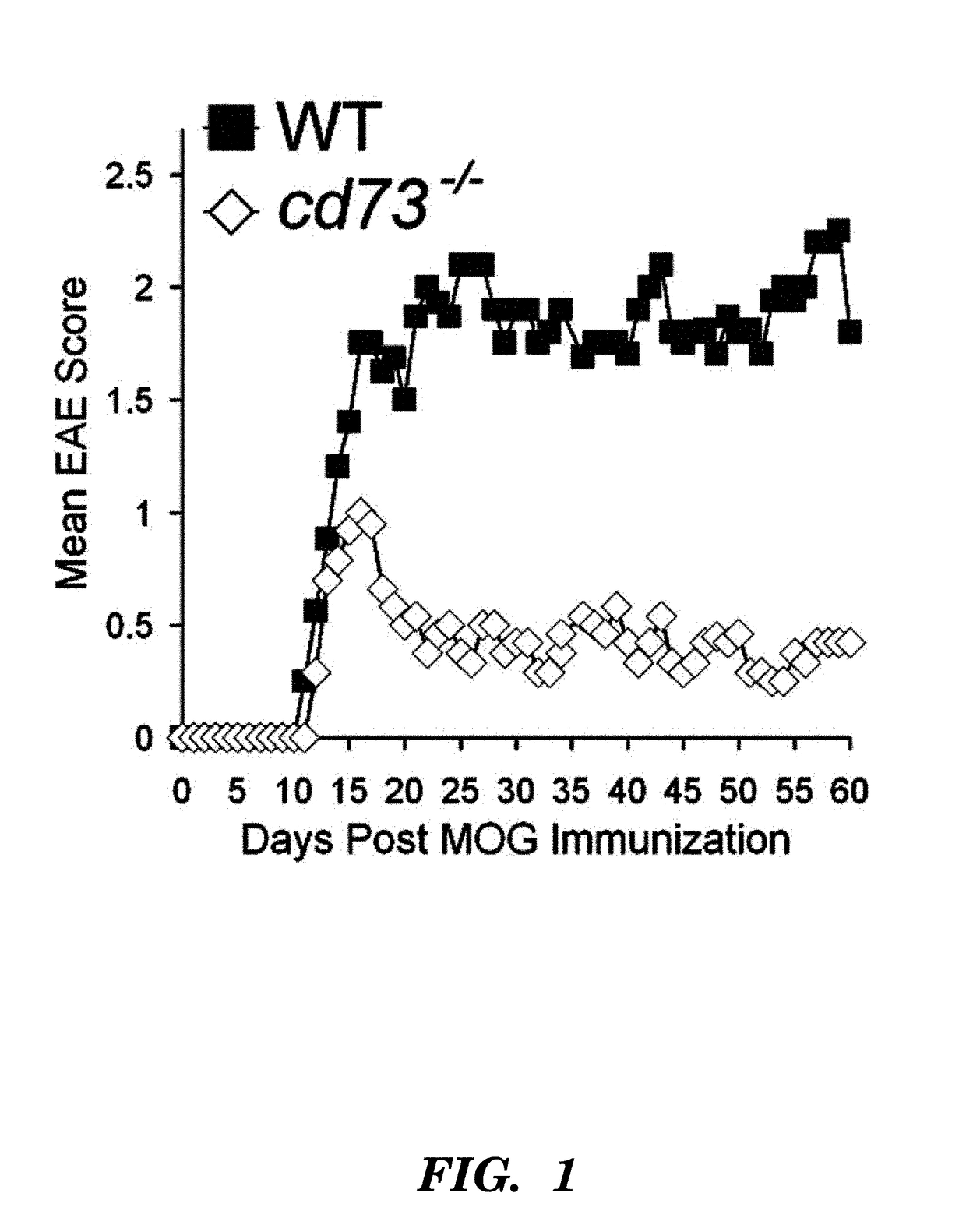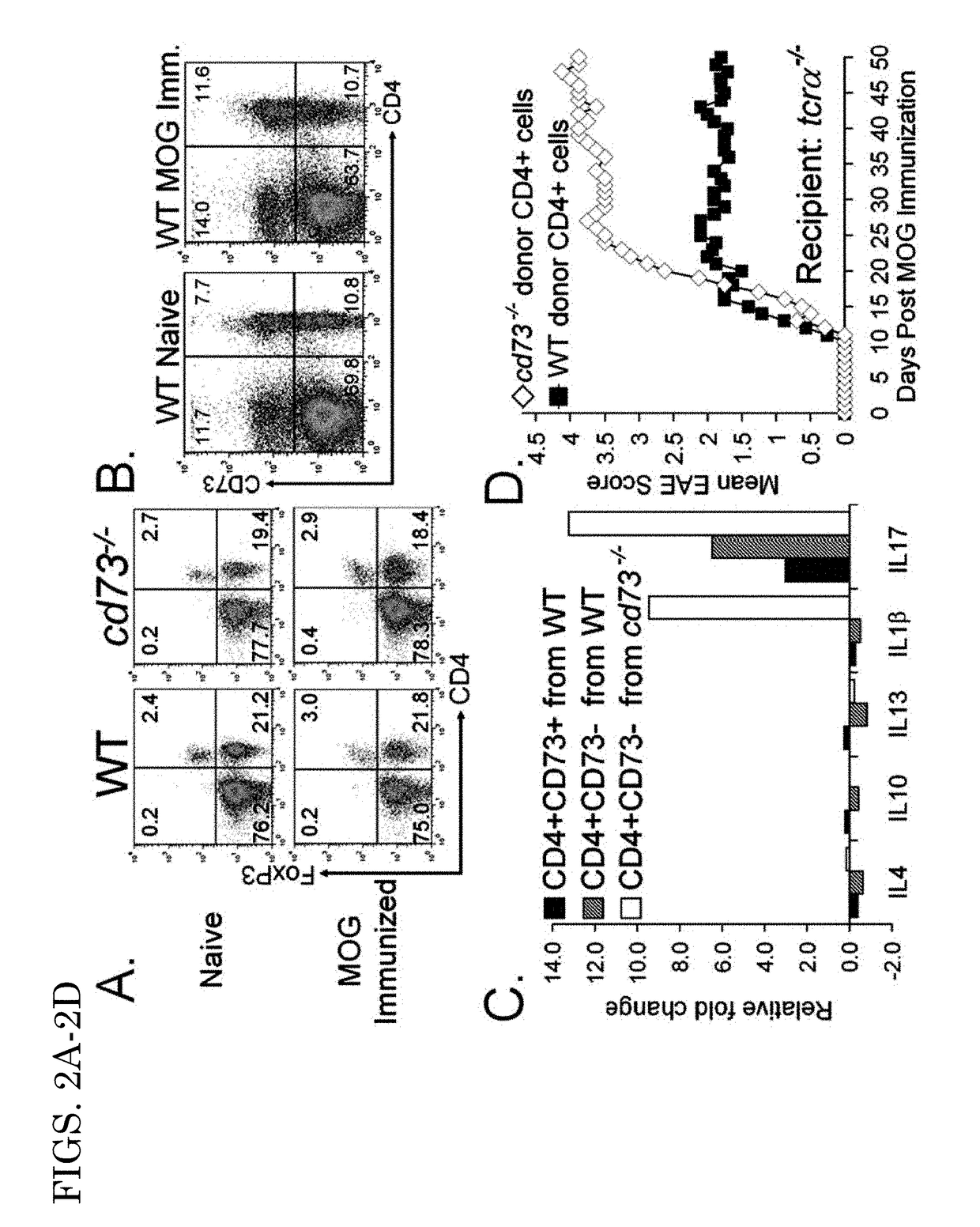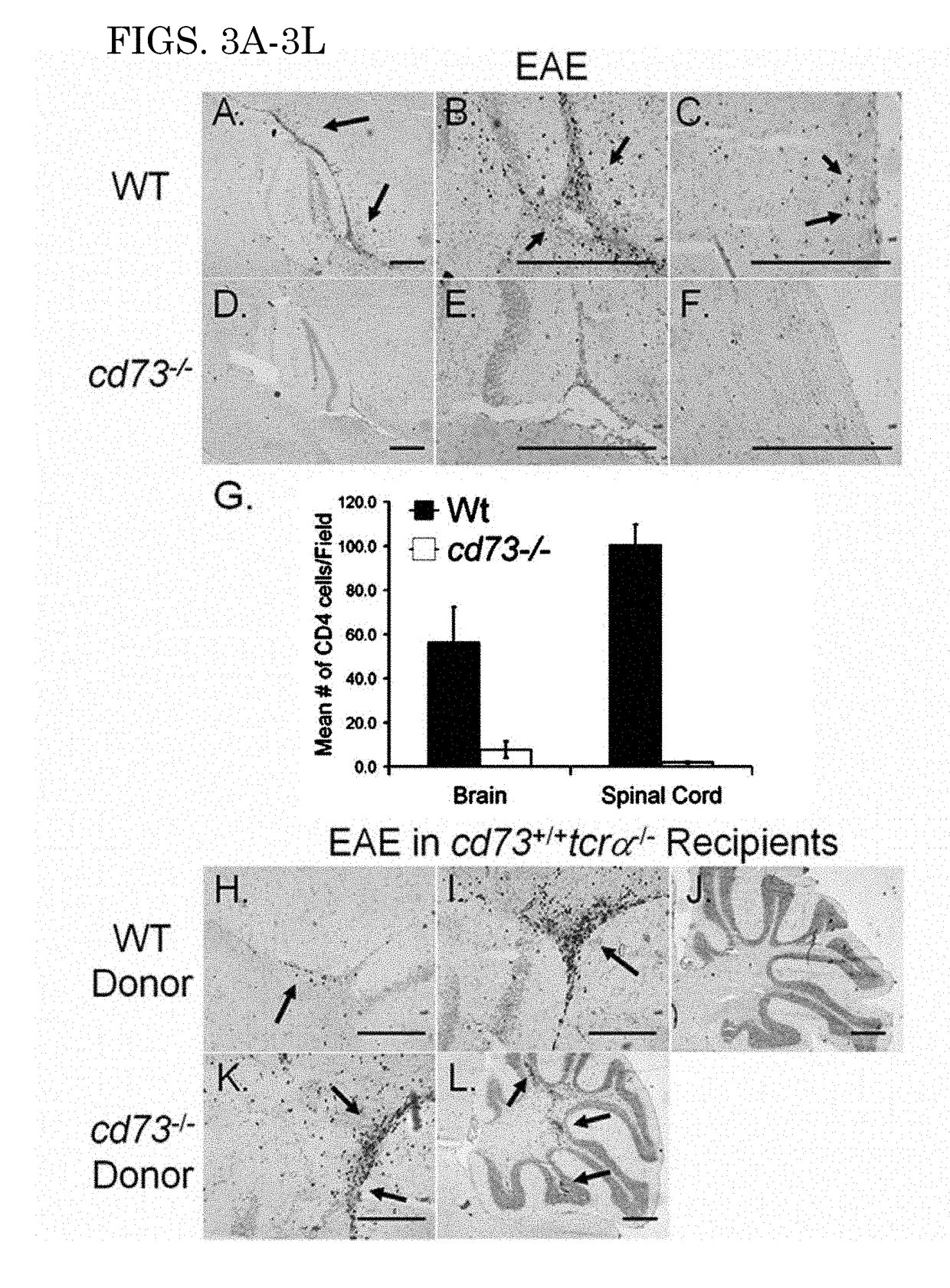Modulation of blood brain barrier permeability
a blood brain barrier and permeability technology, applied in the field of blood brain barrier permeability modulation, can solve the problems of bbb obstructing the delivery of neurological drugs to a site of disease in the brain, unselective transport, uncontrolled neural activity, etc., to increase adenosine level and/or bioavailability, modulate adenosine receptors, and increase cd73 level and/or activity.
- Summary
- Abstract
- Description
- Claims
- Application Information
AI Technical Summary
Benefits of technology
Problems solved by technology
Method used
Image
Examples
example 1
Mice
[0088]Cd73− / − mice have been previously described (Thompson et al., “Crucial Role for Ecto-5′-Nucleotidase (CD73) in Vascular Leakage During Hypoxia,”J. Exp. Med. 200:1395-1405 (2004), which is hereby incorporated by reference in its entirety) and have been backcrossed to C57BL / 6 for 14 generations. Cd73− / − mice have no overt susceptibility to infection and appear normal based on the size and cellular composition of their lymphoid organs and their T and B cell responses in in vivo and in vitro assays (Thompson et al., “Crucial Role for Ecto-5′-Nucleotidase (CD73) in Vascular Leakage During Hypoxia,”J. Exp. Med. 200:1395-1405 (2004), which is hereby incorporated by reference in its entirety). C57BL / 6 and tcrα− / − mice on the C57BL / 6 background were purchased from The Jackson Laboratories. Mice were bred and housed under specific pathogen-free conditions at Cornell University or the University of Turku. For adenosine receptor blockade experiments, mice were given drinking water sup...
example 2
EAE Induction and Scoring
[0089]EAE was induced by subjecting mice to the myelin oligodendrocyte glycoprotein (“MOG”) EAE-inducing regimen as described in Swanborg, “Experimental Autoimmune Encephalomyelitis in Rodents as a Model for Human Demyelinating Disease,”Clin. Immunol. Immunopathol. 77:4-13 (1995) and Bynoe et al., “Epicutaneous Immunization with Autoantigenic Peptides Induces T Suppressor Cells that Prevent Experimental Allergic Encephalomyelitis,”Immunity 19:317-328 (2003), which are hereby incorporated by reference in their entirety. Briefly, a 1:1 emulsion of MOG35-55 peptide (3 mg / ml in PBS) (Invitrogen) and complete Freund's adjuvant (CFA, Sigma) was injected subcutaneously (50 μl) into each flank. Pertussis toxin (PTX, 20 ng) (Biological Laboratories Inc.) was given intravenously (200 μl in PBS) at the time of immunization and again 2 days later. Mice were scored daily for EAE based on disease symptom severity; 0=no disease, 0.5 -1=weak / limp tail, 2=limp tail and parti...
example 3
T Cell Preparations and Adoptive Transfer
[0090]Mice were primed with MOG35-55 peptide in CFA without PTX. After one week, lymphocytes were harvested from spleen and lymph nodes and incubated with ACK buffer (0.15M NH4Cl, 1 mM KHCO3, 0.1 mM EDTA, pH 7.3) to lyse red blood cells. Cells were incubated with antibodies to CD8 (TIB-105), IAb,d,v,p,q,r (212.A1), FcR (2.4-G2), B220 (TIB-164), NK1.1 (HB191) and then BioMag goat anti-mouse IgG, IgM, and goat anti-rat IgG (Qiagen). After negative magnetic enrichment, CD4+ cells were used either directly or further sorted into specific subpopulations. For sorting, cells were stained with antibodies to CD4 (RM4-5) and CD73 (TY / 23), and in some experiments CD25 (PC61), and then isolated utilizing a FACSAria (BD Biosciences). Post-sort purity was routinely >99%. For adoptive transfer, total CD4+ or sorted T cells were washed and resuspended in sterile PBS. Recipient mice received ≤2.5×106 cells i.v. in 200 μl of sterile PBS.
PUM
| Property | Measurement | Unit |
|---|---|---|
| molecular weight | aaaaa | aaaaa |
| time | aaaaa | aaaaa |
| pH | aaaaa | aaaaa |
Abstract
Description
Claims
Application Information
 Login to View More
Login to View More - R&D
- Intellectual Property
- Life Sciences
- Materials
- Tech Scout
- Unparalleled Data Quality
- Higher Quality Content
- 60% Fewer Hallucinations
Browse by: Latest US Patents, China's latest patents, Technical Efficacy Thesaurus, Application Domain, Technology Topic, Popular Technical Reports.
© 2025 PatSnap. All rights reserved.Legal|Privacy policy|Modern Slavery Act Transparency Statement|Sitemap|About US| Contact US: help@patsnap.com



